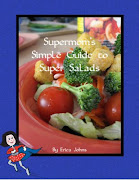
Good For You Girls is the leader in all-natural and organic skin care specifically formulated for the special needs of young skin. Common skin care products are made with risky parabens, harmful petroleum ingredients, potential carcinogens, and more. These chemicals are not safe or healthy for anyone, let alone girls who are going through delicate hormonal changes.
My teenager daughter and I tested these products for 6 months before deciding to bring them to our customers. We have been pleased with the performance, scent, texture, and everything! What I've found is that they work great even for my skin--and I'm 40! So for all the moms looking for affordable, natural skincare products, you'll want to check this out!
Psst.....boys can use these products too! Just pull the labels off. ;)
NO Parabens
NO Sulfates
NO Phthalates
NO Propylene glycol
NO Mineral Oils
NO Silicone
NO Synthetic Fragrance
NO Dyes
Gluten-free and vegan!
I love this starter skin care kit! Perfect for Christmas gifts for all the teen and tween girls on your shopping list. Don't you agree?

Our supplier had a mix-up during their production process for the Blemish Wash and Deodorant that resulted in them getting the wrong bottles, which caused their labels to not affix nicely to the bottles. The end result is that although the product inside the package is top-notch, the container isn't as attractive as it normally would be. This problem turns into a WIN for you, because we are able to offer you the products at a deeper discount than would be normally possible. Once our initial stock is depleted, I don't know if we can get more of the cosmetically-imperfect product or not, so if you want to take advantage of this bargain, now is the time! :) Clickety-click on the product photos to read all about 'em and take advantage of the sale price!


Some of the Good-for-your-skin ingredients used in these products:
* Organic Arnica Extract - Anti-inflammatory properties. Improves skin circulation and stimulate healing.
* Organic Lavender Extract - Natural antibacterial. Tones and revitalizes skin as well as provides a soothing, calming aromatherapy effect.
* Organic Chamomile Extract - Anti-inflammatory properties and very calming to the skin.
* Organic Calendula Extract - Antimicrobial skin healing properties; it is also helps retain skins natural moisture.
* White/Green Tea Extracts - Beautiful antioxidant with anti-inflammatory properties. Reduces free radical damage, and healing to the skin.
* Black Tea - Astringent and toning properties.
* Comfrey Extract (Allantoin) - Repairs skin tissue and promotes new cell growth.
* Vitamin E (Tocopherol Acetate) - Important antioxidant in the deactivation of free radicals and in maintenance of the body’s cell membranes. Improves skin softness and smoothness.
* Organic Olive Oil - An antioxidant, moisturizer and skin smoother. Rich in vitamins and minerals.
* Organic Avocado Oil - Nourishes with Vitamins A & E; also has antioxidant properties. Beautiful for sensitive skin.
* Organic Jojoba Oil - Helps provide a protective barrier on skin to maintain moisture and keep out environmental toxins.
* Organic Sunflower Seed Oil - High in essential fatty acids that nourish the skin and help break up excess sebum that can clog pores.
* Glycerin - Plant derived skin-softener and humectant.
* Witch Hazel - A natural astringent, chosen for its antibacterial properties. It is cooling and soothing to the skin.
* Organic Aloe Vera Gel - Anti-inflammatory properties, it’s cooling to the skin, and stimulates repair to damaged skin.
* Spirae Ulmaria Extract (Meadowsweet) - Targets clogged pores, anti bacterial and reduces sebum.
* Canadian Willow Extract - Natural salicylic acid helps to exfoliate and slough away dead skin cells. Anti-inflammatory, and promotes new cell growth.
* Papaya Extract - The enzyme papain, for its exfoliating properties, ability to remove dead skin cells. Antibacterial without irritation.
* Pineapple Extract - Anti-inflammatory properties, helps repair skin.
* Pumpkin Seed Extract – Helps repair the skin, and promote new cell growth.
* Organic Rose Hip Oil – High in Linoleic and Linolenic essential fatty acids which are beneficial for the treatment of damaged and distressed skin.
* Organic Borage Oil – Excellent for dry skin, acne, and dermatitis.
* 100% Natural Aromatics - A combination of natural essential oils and aromatics. No synthetic fragrance
















